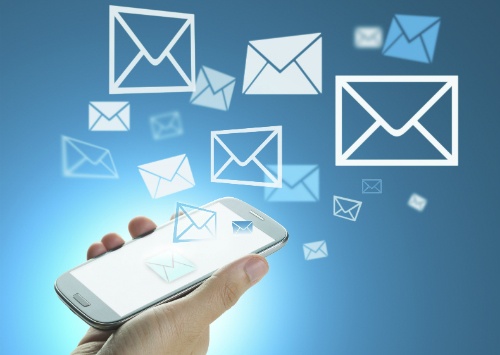
You just wrapped up a wildly successful social campaign, or started collecting emails at the register, and now you’re the proud owner of several dozen new email addresses. Congratulations! Now what?
The first few days after you collect a new email address may be the most crucial time of that customer’s relationship with your business. What you do now will set the tone for the entire relationship, and create a foundation for either a productive, mutually beneficial partnership or a neglected opportunity.
Here are four actions you should take to maximize the value of every email address you acquire:
1. Validate the Address
Before you do anything with newly acquired addresses, it’s important to first make sure they are accurate. Mistakes happen, so validating email addresses will allow you to correct possible typos, misspellings and syntax errors. It will also allow you to confirm each of the domains and addresses actually exist, which saves you from sending emails to fake or dead addresses or known spam traps.
By validating every email address you receive, you help to maintain the integrity of your database. This step contributes to higher open rates, more click-throughs and an increase in conversions.
2. Enhance Your Subscriber Profiles with Data
Your next step should be to learn everything you can about your new subscribers. The fastest way to achieve this goal is through InstantData.
Simply upload the list of new addresses, and select what information you’d like to learn. You can choose basic demographics, such as age, gender and zip code, plus more subjective items like personal interests and recent purchase data. Select data points you can use to create more targeted, personalized content and avoid generic, one-size-fits-all messages.
3. Send a Relevant Welcome Email
Finally you’re ready to send your new subscribers an email. This first email is the most important, so make it count!
Start by sending an effective welcome message that makes your new subscriber feel important. If you crossed paths amidst a busy conference, it’s possible the subscriber may not remember giving you her email address. Remind her who you are, where you met and why she’s receiving an email from you. This is also the best time to let your new subscriber know how you plan to use her email address. Be clear about how often you’ll be emailing her, and why-whether it’s once a week with new blog posts, every time you have a new product in stock or to announce a sale.
If you have a subscriber preference center, include a link in the welcome email to ensure the subscriber can update her preferences and provide you with critical additional insight into her interests.
Finally, start the relationship off on a high note by offering your new subscriber something of value. This might be a small coupon, a link to your latest eBook or helpful tips your new subscriber can put to use immediately.
4. Consider Possible Segments
After sending the initial email, you’ll begin to gain helpful insight on each new subscriber. Look at the data you’ve amassed and identify opportunities to add each new subscriber to a segmented list.
Keep in mind, your segments will depend on the nature of your business. For example, does it make sense to send different messages to female and male subscribers? If you’re a clothing retailer, the answer is probably “yes.” But, if you’re a business technology provider, then maybe not. Consider these other factors:
- Age
- Geographic location
- Purchase history
- Hobbies
Use all data at your disposal to craft the most targeted and highly relevant email messages possible.
As you continue to collect more data, you can refine your understanding of each subscriber in order to drive greater engagement and stronger relationships. The foundation you create at the start of your relationship will play out over the course of the customer’s lifecycle, ensuring maximum value for both your subscriber and your bottom line.
Looking for more tips on creating engaging, targeted messages likely to make an impact on your customers? Check out our new infographic The 3 Stages of Personalization.
 Affiliate Marketing
Affiliate Marketing Automotive
Automotive eCommerce and Retail
eCommerce and Retail FinTech
FinTech LeadGen
LeadGen Nonprofit and Political
Nonprofit and Political Payments
Payments Technology Platforms
Technology Platforms Tourism and Hospitality
Tourism and Hospitality

